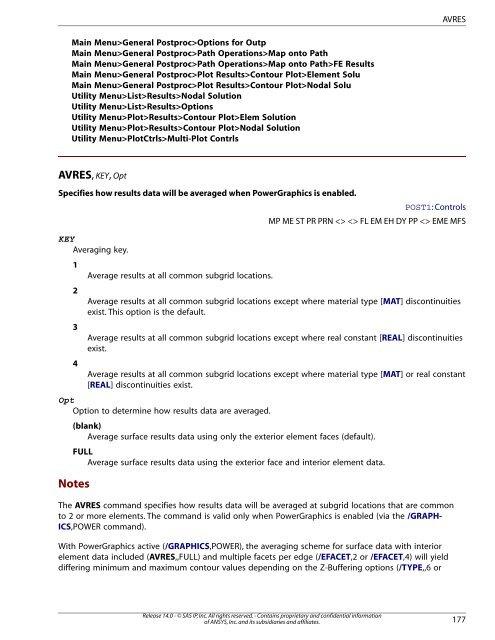

UNITS, Label, LENFACT, MASSFACT, TIMEFACT, TEMPFACT, TOFFSET, CHARGEFACT, FORCEFACT, HEATFACTĪnnotates the database with the system of units used. Note that /UNITS is merely a recording device. Users are advised to check the Commands Manual for the /UNITS command. Workbench Mechanical has several systems of units for a user to choose. The check could be included at the beginning of any APDL Commands Object in Workbench that assumes the UNITS employed in a SOLVE. This article illustrates how to use APDL commands to detect the UNITS that are active when SOLVE is requested for an environment in Workbench Mechanical. Industrial Equipment and Rotating MachineryĪnsys Workbench Mechanical supports the presence of APDL commands in the Outline so that user-programmed commands will act on a model at the Body, Connection, Solver or Postprocessing stage of an Ansys job running from the ds.dat file generated by the Mechanical SOLVE command.Torsional Vibration Measurements Testing.Fluid Flow & Thermal Applications (CFD).Electronic and Electrical Applications (EM).

Lectures and hands-on workshops to give you the knowledge and confidence you will need to apply what you have learned to your own designs. Mechanical Engineers, including Automotive Engineers, Materials Engineers, Aerospace Engineers, Industrial Engineers, Structural Engineers, and many other subdisciplines.
Some users will appreciate having working knowledge of Ansys Mechanical in the Workbench environment, although this is not required. A technical education and a background in the fundamentals of finite element analysis are recommended. Please note that for those wishing to learn the Workbench version of Ansys Mechanical, the “ Ansys Mechanical Getting Started” training course is recommended. With this foundation in place, users can apply this knowledge to efficiently set up, solve, and postprocess virtually any type of analysis. The Mechanical APDL workflow, graphical user interface, and APDL command syntax will be introduced. This course introduces new users, or experienced Ansys Mechanical users, to the Ansys Mechanical APDL user interface. All these benefits are accessible within the Ansys Mechanical APDL user interface. It also offers many conveniences such as parameterization, macros, branching and looping, and complex math operations. APDL is the foundation for all sophisticated features, many of which are not exposed in the Workbench Mechanical user interface. Regardless of the type of simulation, each model is represented by a powerful scripting language … the Ansys Parametric Design Language (APDL). Thermal, Structural, Acoustic, Piezoelectric, Electrostatic and Circuit Coupled Electromagnetics are just a few examples of what can be simulated. The Ansys finite element solvers enable a breadth and depth of capabilities unmatched by anyone in the world of computer-aided simulation.






 0 kommentar(er)
0 kommentar(er)
